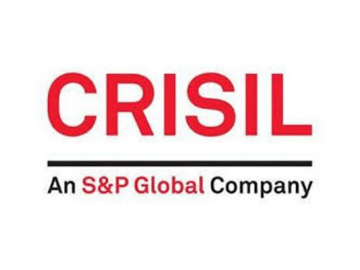India’s diamond industry is likely to witness 15-20% decline in revenue in this financial year due to falling demand and rising prices of rough gemstone globally, according to a report by Crisil Ratings.
Revenue of the Indian diamond industry is set to be cut 15-20% to ₹19-20 billion this fiscal, compared with a decadal high in the last financial year, following a double blow from falling demand and rising prices of roughs across the globe, Crisil Ratings said in a report.
“While volatility in rough diamond prices is typically passed on to the polished diamond prices – albeit with a lag due to the long operating cycle in the trade – tepid demand has kept polished prices from fully catching up with rough prices this time around.”
“This could squeeze the operating profitability of Indian diamond polishers by 75-100 basis points to 4-4.25% this fiscal. Accordingly, interest coverage may weaken marginally,” Crisil Ratings Chief Ratings Officer Subodh Rai said.
According to the report, a surge in COVID-19 cases has led to lockdowns in several regions in China, which is one of the largest consumers of Indian polished diamonds.
Further, it noted that inflation and opening up of other avenues of discretionary spending such as travel and hospitality will dampen demand growth in the U.S. and Europe in the near term.
As for prices, the U.S. sanctions on Russian diamond mining company Alrosa following the invasion of Ukraine has cut supplies of rough diamonds by almost 30%.
The state-owned company is the largest diamond producer in the world and the supply constraint will continue amid sanctions on Russia, the report said.
Also, key buyers in the U.S. and EU have been insisting on certificates of origin and as a result, the prices of roughs have shot up almost 30% since the start of this fiscal, it added.
On the brighter side, the report said that payments from customers have been timely and this, along with reduced inventory, will control reliance on external debt.
As a result, the total outside liabilities to tangible net worth ratio will remain under 1.5 times for the industry, keeping the credit risk profiles of players steady.
The report also revealed that pent-up demand and the strong festive season saw Indian diamantaires stocking up on rough diamonds in the second half of last fiscal.
While exports of polished diamond grew 48% year-on-year last fiscal, rough diamond imports were up 74%, with almost 40% of the imports being in the closing quarter.
The huge inventory build-up was corrected in the first quarter of this fiscal, following the onset of the Russia-Ukraine war at the fag-end of last fiscal and disruptions in the Chinese market because of new variants of COVID-19, it noted.
“The increasing prices and short supply of natural diamonds has also meant a growing shift in consumer interest towards lab-grown diamonds, which resemble natural diamonds and are 50-60% cheaper to boot, offering growth opportunities in a price sensitive market. The market share of lab-grown diamonds is estimated to have expanded to about 8% presently from less than 3% two years ago,” Crisil Ratings Director Rahul Guha added.
About Crisil Ratings
Crisil Ratings pioneered credit rating in India in 1987, and emerged a leader with their independent, analytical rigor and innovation. As a full-service rating agency, they rate the entire gamut of debt instruments. They’ve not only set business standards but also instituted several innovations with our best practices.
Crisil Ratings serve lenders, investors, issuers, market intermediaries and regulators by covering manufacturing companies, banks, NBFCs, PSUs, financial institutions, state governments, urban local bodies, and mutual funds.
Issuers and borrowers leverage their ratings for enhancing their access to funding, widening range of funding alternatives, and optimizing cost of funds. Investors and lenders use their ratings to supplement their internal evaluation process and benchmark credit quality across investment options. Crisil Ratings act as benchmarks for pricing and trading of debt instruments for markets at large.






